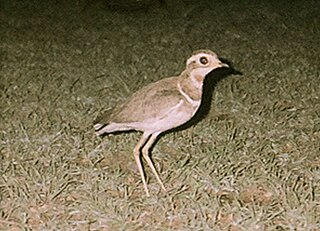
Jerdon's courser is a nocturnal bird belonging to the pratincole and courser family Glareolidae endemic to India. The bird was discovered by the surgeon-naturalist Thomas C. Jerdon in 1848 but not seen again until its rediscovery in 1986. This courser is a restricted-range endemic found locally in India in the Eastern Ghats of Andhra Pradesh. It is currently known only from the Sri Lankamalleswara Wildlife Sanctuary, where it inhabits sparse scrub forest with patches of bare ground.
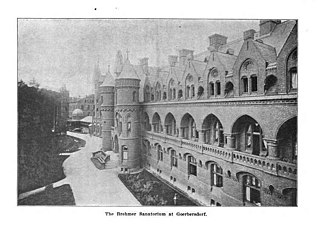
A sanatorium, also sanitarium or sanitorium, are antiquated names for specialised hospitals, for the treatment of specific diseases, related ailments and convalescence. Sanatoriums are often in a healthy climate, usually in the countryside. The idea of healing was an important reason for the historical wave of establishments of sanatoriums, especially at the end of the 19th- and early 20th centuries. One sought, for instance, the healing of consumptives, especially tuberculosis or alcoholism, but also of more obscure addictions and longings of hysteria, masturbation, fatigue and emotional exhaustion. Facility operators were often charitable associations such as the Order of St. John and the newly founded social welfare insurance companies.
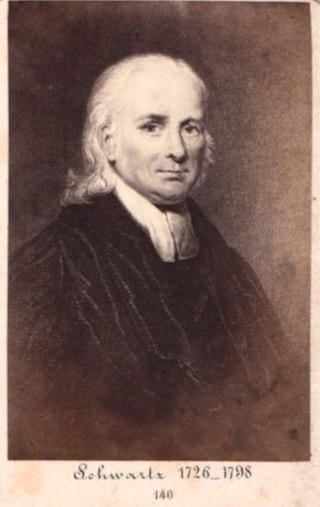
Christian Frederick Schwarz was a German Lutheran missionary to India. He was known for his linguistic skills, with knowledge of Latin, Greek, Hebrew, Sanskrit, Tamil, Urdu, Persian, Marathi, and Telugu and even used by the British to serve as an emissary of peace and sent to the court of Haider Ali in Mysore. He worked alongside the Indian royal families, tutoring the Raja Serfoji of Tanjore, and was influential in establishing Protestant Christianity in southern India.
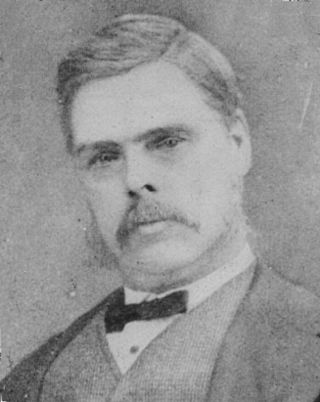
Francis Talbot Day was an army surgeon and naturalist in the Madras Presidency who later became the Inspector-General of Fisheries in India and Burma. A pioneer ichthyologist, he described more than three hundred fishes in the two-volume work on The Fishes of India. He also wrote the fish volumes of the Fauna of British India series. He was also responsible for the introduction of trout into the Nilgiri hills, for which he received a medal from the French Societe d'Acclimatation. Many of his fish specimens are distributed across museums with only a small fraction deposited in the British Museum, an anomaly caused by a prolonged conflict with Albert Günther, the keeper of zoology there.
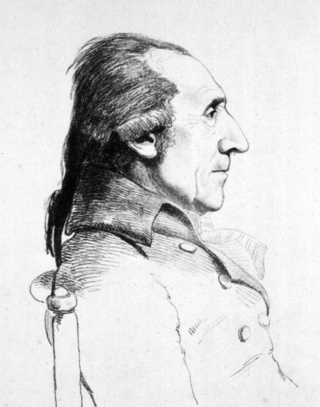
Patrick Russell was a Scottish surgeon and naturalist who worked in India. He studied the snakes of India and is considered the "Father of Indian Ophiology". Russell's viper, Daboia russelii, is named after him.

Robert Wight MD FRS FLS was a Scottish surgeon in the East India Company, whose professional career was spent entirely in southern India, where his greatest achievements were in botany – as an economic botanist and leading taxonomist in south India. He contributed to the introduction of American cotton. As a taxonomist he described 110 new genera and 1267 new species of flowering plants. He employed Indian botanical artists to illustrate many plants collected by himself and Indian collectors he trained. Some of these illustrations were published by William Hooker in Britain, but from 1838 he published a series of illustrated works in Madras including the uncoloured, six-volume Icones Plantarum Indiae Orientalis (1838–53) and two hand-coloured, two-volume works, the Illustrations of Indian Botany (1838–50) and Spicilegium Neilgherrense (1845–51). By the time he retired from India in 1853 he had published 2464 illustrations of Indian plants. The standard author abbreviation Wight is used to indicate this person as the author when citing a botanical name.
Chittamuru Ramaiya was a 19th and 20th century Theosophist and translator, and an associate of Annie Besant. The son of Chittamuru Sriramulu, he had five brothers Chittamuru Subbaramaiah, Chittamuru Krishnaiah, Chittamuru Subbarayudu, Chittamuru Lakshmaiah and Chittamuru Ramachandraiah. He completed a degree in Bachelor of Arts in Literature in the 19th century. He was associated with Annie Besant for some time at the Theosophical Society, Adyar, Madras, India.
The CSI Tiruchirappalli Thanjavur Diocese is a diocese of Church of South India in Tamil Nadu state of India. The diocese is one among the 24 dioceses of Church of South India and was one of the first 14 dioceses to be formed at the inaugural of the Church of South India in 1947.
Bishop Vedanayagam Samuel Azariah was an Indian evangelist and the first Indian bishop in the churches of the Anglican Communion, serving as the first bishop of the diocese of Dornakal. A pioneer of Christian ecumenism in India, Azariah had a complex relationship with Mahatma Gandhi, who at least once called him postcolonial Indians' "Enemy Number One."
Government Hospital of Thoracic Medicine, popularly known as the Tambaram TB Sanatorium, is a major state-owned hospital situated in Chennai, India. The hospital is funded and managed by the state government of Tamil Nadu. It was founded in 1928.
Krishnaswami Srinivas Sanjivi (1903–1994) was an Indian medical doctor, Gandhian, social worker and the founder of Voluntary Health Services (VHS), a medical facility in Chennai reported to be serving the lower and middle-class people of the society. He was honoured by the Government of India in 1971 with Padma Shri, the fourth highest Indian civilian award. Five years later, the government followed it up by awarding him the third highest civilian award of Padma Bhushan in 1976.
Bishop Babbili Prabhudass(died 1996) was the first elected Bishop - in - Karimnagar Diocese of the Church of South India which was ecclesiastically bifurcated from the Diocese of Dornakal of the Church of South India in early 1978. Prabhudass led the bishopric for a period of five years from 1978 through 1982.
The 1928 New Year Honours were appointments by King George V to various orders and honours to reward and highlight good works by citizens of the United Kingdom and British Empire. They were announced on 30 December 1927.
Sir Cecil Fabian BrackenburyKCIE CSI was a civil servant and bureaucrat who served as Chief Secretary of the Madras Presidency from 1935 to 1939. Brackenbury was Chief Secretary when the first elections were held in the Madras Presidency as per the Government of India Act, 1935 and had a warm and friendly relationship with C. Rajagopalachari, the Premier of Madras Presidency from 1937 to 1939.
The 1873 Birthday Honours were appointments by Queen Victoria to various orders and honours to reward and highlight good works by citizens of the British Empire. The appointments were made to celebrate the official birthday of the Queen, and were published in The London Gazette on 24 May 1873.

William Howard Campbell was an Irish Presbyterian missionary who worked with the London Missionary Society in southern India. He worked in Jammalamadugu in Cudappah District. He was also a naturalist with a keen interest in birds and moths. The Campbell Memorial School founded in Jammalamadugu in 1913 was named in his memory. The Northern Ireland MP, Sir David Callender Campbell was one of his sons.
Ludwig Bernhard Ehregott Schmid was a German Lutheran clergyman and missionary who worked in India. Ill health led him to choose to live in Ootacamund and he spent considerable time examining local plants, and making collections of specimens, many of which were deposited in Jena where his cousin J. C. Zenker published a few descriptions but died too early to produce a more complete work. Several plant species have been named after Schmid including the fossil trees Peuce schmidiana and Mesembrioxylon schmidianum from Thiruvakkarai near Pondicherry.
Annie Wardlaw Jagannadham was an Indian physician trained at Edinburgh. She was the first Indian woman qualified to practice medicine in Britain.
David Callender Campbell was an Irish businessman and naturalist.














